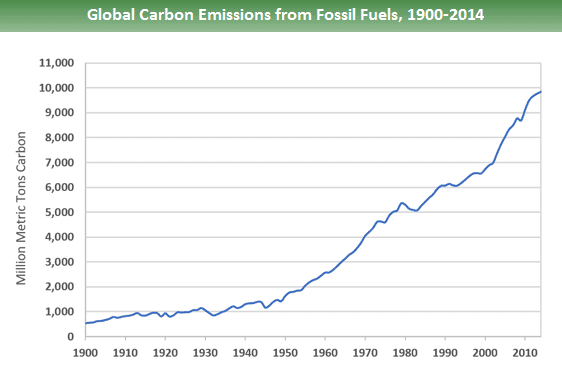The Earth’s climate system is extremely complex, comprised of many intertwined components. This is why there will be a certain degree of uncertainty when making projections about the climate’s future. Even so, our climate models are surprisingly reliable considering the simulated complexities. According to a new study, even some of the first models produced in the 1970s have accurately predicted the surface warming experienced today.

In many ways, climate models are a lot like weather forecasting, although the two should never be confused or used interchangeably. The famous saying ‘the climate is what you expect; the weather is what you get’ beautifully illustrates their fundamental differences. That being said, whereas weather models make predictions over specific areas and short timespans, climate models are broader and analyze long timespans (i.e. it averages the weather over a 30 year period).
Climate models employ mathematical equations that use thousands of data points in order to simulate the transfer of energy and water that takes place in climate systems. This enables scientists to predict how average conditions will change in a region over the coming decades. And, according to a new study, climate models have been surprisingly accurate.
Researchers at the Massachusetts Institute of Technology and Woods Hole Oceanographic Institution examined 15 climate models employed between 1979 and 2007, which made projections of how Earth’s surface would warm in the future as a result of rising CO2 emissions. The assessment also included the first four reports by the UN’s intergovernmental panel on climate change (IPCC).
Carbon emissions are one of the most important inputs that scientists use to make projections about a region’s future climate. But although the physics of a climate model produced in the 1970s may be on point, it was challenging for the authors to estimate how much CO2 the world would emit decades later. Modern models are much more nuanced and, hence, more reliable).
For instance, recent data shows that global CO2 emissions were 150 times higher in 2011 than they were in 1850.

“Model projections rely on two things to accurately match observations: accurate modeling of climate physics, and accurate assumptions around future emissions of CO2 and other factors affecting the climate. The best physics‐based model will still be inaccurate if it is driven by future changes in emissions that differ from reality,” the authors wrote in their new study.
So, in order to establish the reliability of the climate models examined in the new study, the researchers inserted the actual amount of greenhouse gas emissions into these models. It turned out that these models provided accurate forecasts of global average temperatures — 14 of the 17 models were accurate, the researchers concluded.
“We find that climate models published over the past five decades were generally quite accurate in predicting global warming in the years after publication, particularly when accounting for differences between modeled and actual changes in atmospheric CO2 and other climate drivers. This research should help resolve public confusion around the performance of past climate modeling efforts, and increases our confidence that models are accurately projecting global warming,” the researchers wrote.
Since surface temperature is correlated with other climate patterns, such as rainfall and sea-level rise, the next step will be to examine how accurate previous climate models are at predicting shifts in regional climate patterns. After all, this is what truly matters for people.

What’s truly remarkable is that these decades-old models did a pretty good job of projecting future warming — while policymakers, along with part of the public, ignored their warnings. As such, confirmation that our models actually work should enable more aggressive action to mitigate the climate emergency.
The planet’s surface is already more than a degree Celsius warmer on average than prior to the Industrial Age, with some parts of the world experiencing even more heating — the Arctic, for instance, experiences twice the average global warming.
If current greenhouse emission trends continue to develop unabated, modern climate models forecast average warming of at least 3 degrees Celsius by the end of the century, which would mean a growing amount of disasters and huge challenges in feeding the world.
The findings were reported in the journal Geophysical Research Letters.


